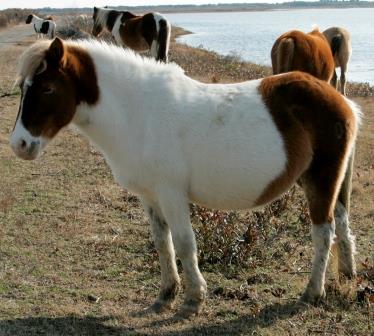The horse (Equus ferus caballus) is an odd-toed hooved mammal (ungulate) belonging to the family Equidae in the order Perissodactyla. The vast majority of horses today are domesticated animals, with more than 300 breeds found throughout the world. (The domestication of horses goes back to about 3500 BC.) Nevertheless, feral populations of formerly domesticated horses that have reverted to the wild state can be found in such locations as Australia, Portugal, Nova Scotia, and the western United States. One notable population of about 300 feral horses lives on Assateague Island, a 60-km-long (37-mile-long) barrier island under the governance of the states of Virginia and Maryland. The feral horses that comprise this population are known as the Assateague horse in Maryland and the Chincoteague pony in Virginia. The National Park Service supervises the herd in Maryland, whereas the Chincoteague Volunteer Fire Company (as authorized by the U.S. Fish and Wildlife Service) manages the group in Virginia. The two herds are kept apart by a fence between the two states, with about 150 horses on each side. See also: Domestication (anthropology); Horse production; Island biogeography; Perissodactyla

There is no official record of how the horses came to settle on Assateague Island. The likelihood of the ancestors of the present-day horses surviving shipwrecks or escaping from pirate hideouts (which have been suggested as possibilities), following which they established new populations, is slim. Most likely, today's population comprises the descendants of horses that were secretly transported to Assateague Island (and other barrier islands) in the 1600s and 1700s by mainland farmers and traders who sought to evade the local laws and taxations pertaining to the ownership of livestock.
The introduction of horses into the New World by Spanish explorers in the late fifteenth century and early sixteenth century was actually a reintroduction. Horses originally evolved in North America in prehistoric times, and then spread to Asia (and onwards to Europe and North Africa) via Beringia, a former land and ice bridge (now the Bering Strait) that connected North America and Siberia. Sometime between 10,000 and 7600 years ago, however, the horse became extinct in the Americas, possibly as the result of hunting by humans. See also: Ancestral ranges and historical biogeography; Ecology; Extinction (biology); Population dispersal; Zoogeography





